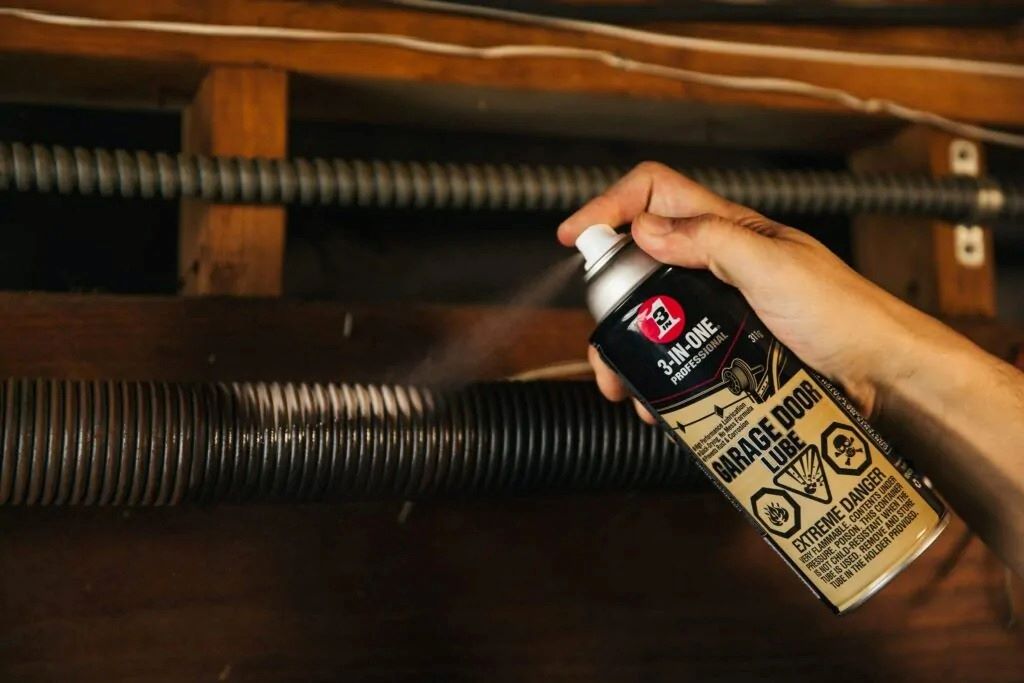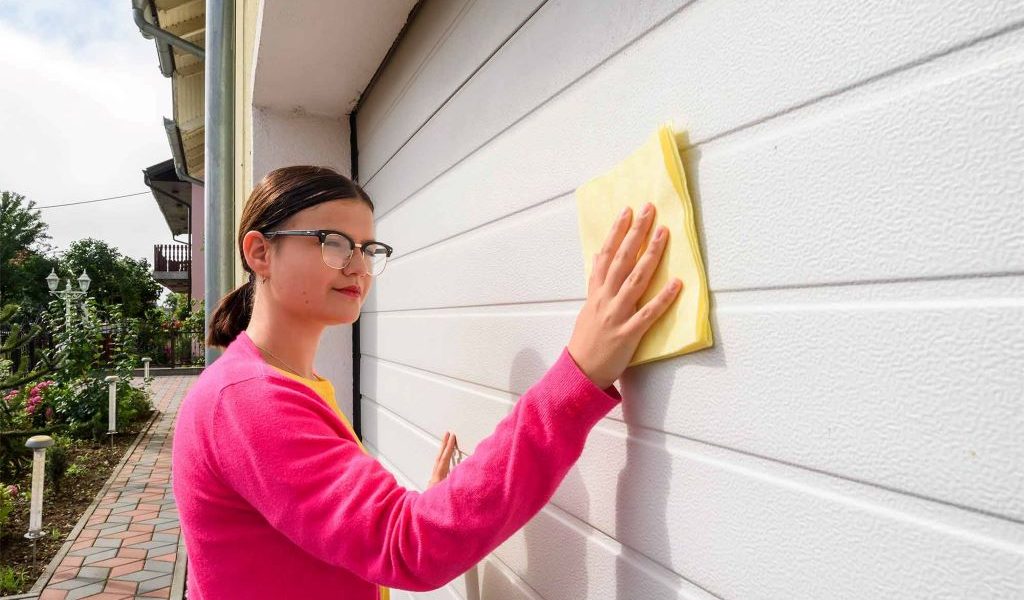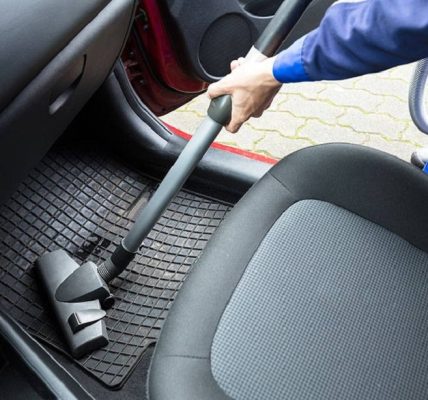Your Complete Step-by-Step Guide to Cleaning and Maintaining Your Garage Door
Picture this: You’re rushing to work on a Monday morning when suddenly your garage door refuses to budge. The grinding noise echoes through your neighborhood as you frantically press the remote button. Sound familiar? This frustrating scenario happens to thousands of homeowners every year, yet it’s completely preventable with proper maintenance.
Your garage door is more than just an entrance—it’s a complex mechanical system that operates up to 1,500 times annually. The global garage door market, valued at $20.92 billion in 2023, reflects just how essential these systems are to modern homes. However, most homeowners overlook regular cleaning and maintenance until problems arise. This comprehensive step-by-step guide to cleaning and maintaining your garage door will transform you from a reactive homeowner to a proactive one, saving you money and preventing those dreaded Monday morning disasters.
Understanding Your Garage Door System Components
Before diving into maintenance routines, you need to understand what you’re working with. Your garage door system consists of multiple interconnected components that work together seamlessly. The door panels form the visible structure, while springs provide the lifting power that makes opening effortless.
Additionally, the track system guides your door’s movement up and down. Rollers attached to each panel section glide smoothly along these tracks. The opener motor provides automated operation, while cables and pulleys distribute weight evenly across the system. Safety features like photo-eye sensors prevent accidents by stopping closure when objects are detected.
Furthermore, weather stripping seals gaps to maintain energy efficiency and prevent moisture infiltration. Understanding these components helps you identify potential problems early. Each part requires specific attention during maintenance, and recognizing their functions makes cleaning more effective and thorough.
Essential Tools and Supplies for Proper Maintenance
Successful garage door maintenance starts with having the right tools and cleaning supplies readily available. Basic hand tools include adjustable wrenches, screwdrivers, and pliers for minor adjustments and tightening loose hardware. A sturdy ladder provides safe access to upper tracks and opener components.
However, specialized lubricants are crucial for optimal performance. Silicone-based spray lubricants work best for rollers, hinges, and pivot points. White lithium grease is ideal for screw-drive openers and gear mechanisms. Avoid using WD-40 or general-purpose oils, as these attract dirt and debris over time.
Therefore, cleaning supplies should include mild dish soap, soft-bristled brushes, microfiber cloths, and a garden hose. For stubborn stains, consider specialized garage door cleaners that won’t damage paint or protective coatings. Safety equipment like work gloves and safety glasses protect you during maintenance tasks. Having everything organized and accessible makes the process more efficient and enjoyable.
Monthly Visual Inspection and Safety Checks
Regular visual inspections catch problems before they become expensive repairs. Professionals recommend performing maintenance checks at least twice yearly, though monthly inspections help identify issues early. Start by examining door panels for dents, cracks, or rust spots that could compromise structural integrity.
Additionally, check all moving parts for signs of wear. Look for frayed cables, worn rollers, or bent tracks that could cause operational problems. Listen carefully during operation—unusual grinding, squeaking, or scraping sounds indicate components needing attention. Test safety features by placing a block of wood in the door’s path; it should reverse immediately upon contact.
Moreover, inspect weather stripping for tears or gaps that allow moisture and pests inside. Examine the opener’s mounting brackets for loose bolts or sagging that could affect performance. Document any concerns with photos and dates to track deterioration patterns. This systematic approach helps you prioritize repairs and budget for necessary replacements.
Deep Cleaning Your Garage Door Exterior
A clean garage door enhances curb appeal and prevents premature deterioration. Clean the exterior at least annually, or more frequently in coastal areas where salt air accelerates corrosion. Begin by removing loose dirt and debris with a garden hose, working from top to bottom to prevent streaking.
However, stubborn stains require more aggressive cleaning methods. Mix warm water with mild dish soap in a bucket, creating a gentle cleaning solution. Use a soft-bristled brush to scrub panel surfaces, paying special attention to textured areas where grime accumulates. Avoid harsh chemicals or abrasive cleaners that could damage paint finishes.
Furthermore, specialized cleaning products designed for garage doors provide superior results on tough stains. Rinse thoroughly with clean water to remove soap residue that could attract more dirt. Allow the door to air dry completely before applying any protective treatments. Regular cleaning not only improves appearance but also extends your door’s lifespan by preventing corrosion and material degradation.
Interior Cleaning and Track Maintenance Procedures
Interior maintenance focuses on the mechanical components that ensure smooth operation. Start by disconnecting power to the opener and manually opening the door to access all areas safely. Clean the interior door surface with the same gentle soap solution used outside, removing any oil stains or debris accumulation.
Additionally, track cleaning is crucial for proper operation. Use a damp cloth to wipe down vertical and horizontal track sections, removing built-up dirt and old lubricant residue. A soft brush helps dislodge stubborn debris from track corners and roller guides. Avoid using harsh solvents that could damage track coatings or seals.
Therefore, pay special attention to areas where tracks bend or change direction, as these accumulate more debris. Clean around roller mounting points where grease and dirt typically collect. Check for loose bolts or mounting brackets while cleaning, tightening as necessary. A clean, well-maintained track system operates more quietly and efficiently while reducing component wear.

Lubrication Schedule and Best Practices
Proper lubrication is essential for smooth, quiet operation and extended component life. Industry experts recommend lubricating all moving parts at least twice yearly using silicone-based lubricants. Create a lubrication schedule that coincides with seasonal maintenance routines for consistency.
However, different components require specific lubricant types for optimal performance. Use silicone spray on rollers, hinges, and pivot points for smooth movement without attracting dirt. Apply white lithium grease to screw-drive openers and gear mechanisms that need long-lasting protection. Chain-drive openers benefit from specialized chain lubricants designed for garage door applications.
Moreover, avoid over-lubrication, which attracts debris and creates operational problems. Apply lubricants sparingly, allowing excess to drain away naturally. Wipe away any surplus with clean rags to prevent dirt accumulation. Test door operation after lubrication to ensure smooth, quiet performance. Document lubrication dates to maintain consistent schedules and track component performance over time.
Weather Stripping Replacement and Installation
Weather stripping creates an essential seal between your garage and exterior elements. Over time, rubber seals deteriorate from temperature fluctuations, UV exposure, and normal wear. Inspect weather stripping during regular maintenance, looking for cracks, hardening, or gaps that compromise effectiveness.
Additionally, replacing worn weather stripping improves energy efficiency and prevents moisture infiltration. Most doors use bottom seals and side/top weatherization systems. Bottom seals typically slide into aluminum tracks, while side seals attach with adhesive backing or mechanical fasteners. Choose replacement materials designed specifically for garage door applications.
Furthermore, proper installation ensures maximum effectiveness and longevity. Clean mounting surfaces thoroughly before installing new seals, removing old adhesive residue and dirt. Apply new weather stripping when temperatures are moderate, as extreme cold or heat affects adhesive bonding. Trim excess material carefully to prevent interference with door operation while maintaining complete sealing.
Hardware Tightening and Adjustment Guidelines
Garage doors experience constant vibration and movement that gradually loosens hardware connections. Regular tightening prevents operational problems and safety hazards. Focus on critical connection points including hinge bolts, track brackets, and opener mounting hardware during maintenance sessions.
However, proper torque specifications prevent over-tightening that could damage components or strip threads. Use appropriate wrench sizes and apply steady pressure rather than impact force. Check manufacturer specifications for torque requirements on critical fasteners. Replace any bolts or nuts showing signs of corrosion or damage.
Therefore, systematic inspection and adjustment prevent small problems from becoming major repairs. Work from top to bottom, checking each connection point methodically. Pay special attention to high-stress areas like spring mounting points and cable attachments. Document any adjustments made and monitor these areas during subsequent inspections for recurring loosening patterns.
Spring System Safety and Professional Considerations
Garage door springs are under extreme tension and pose serious safety risks if handled improperly. Torsion springs mounted above the door can cause severe injury or death if they break or are mishandled. Extension springs on either side also store significant energy that requires professional expertise to safely manage.
Additionally, spring maintenance should be limited to visual inspection and professional service calls. Look for signs of wear including rust, gaps in coils, or visible damage that indicates replacement needs. Listen for unusual sounds during operation that might signal spring problems. Never attempt to adjust, repair, or replace springs yourself.
Moreover, professional technicians have specialized tools and training to safely service spring systems. Garage door replacement costs range from $748 to $1,644, making proper spring maintenance a wise investment in system longevity. Schedule professional inspections annually to ensure springs operate safely and efficiently throughout their service life.
Seasonal Maintenance Schedules and Checklists
Creating seasonal maintenance schedules ensures consistent care throughout the year. Spring maintenance focuses on cleaning away winter debris and assessing damage from freeze-thaw cycles. Summer schedules emphasize lubrication and testing systems during peak usage periods. Fall preparation includes weather stripping inspection and storm-proofing measures.
However, customize schedules based on your climate and usage patterns. Coastal areas need more frequent cleaning due to salt exposure. Northern climates require additional cold-weather preparations. High-usage doors benefit from more frequent lubrication cycles. Track your door’s operational cycles to determine optimal maintenance frequency.
Furthermore, comprehensive checklists ensure no critical tasks are overlooked. Include safety tests, lubrication points, cleaning procedures, and hardware inspections. Create seasonal reminders using smartphone apps or calendar systems. Document completed tasks and note any concerns for future reference. Consistent scheduling prevents maintenance oversights that lead to expensive repairs.
Spring Maintenance Checklist:
- Clean exterior and interior surfaces thoroughly
- Inspect weather stripping for winter damage
- Test safety reversal systems
- Check and tighten all hardware connections
- Lubricate moving parts after winter storage
Summer Maintenance Checklist:
- Deep clean tracks and remove debris buildup
- Test opener remote batteries and programming
- Inspect panels for heat-related expansion damage
- Verify photo-eye sensor alignment and cleanliness
- Check insulation condition and effectiveness
Fall Maintenance Checklist:
- Replace weather stripping if needed
- Test heating elements in opener motors
- Clear drainage areas around door base
- Inspect and clean opener ventilation areas
- Prepare emergency manual operation procedures
Winter Maintenance Checklist:
- Monitor ice buildup around door base
- Check opener cold-weather operation
- Inspect for frost accumulation in tracks
- Verify heating system integration function
- Keep ice-melting products readily available
Troubleshooting Common Problems and Solutions
Understanding common garage door problems helps you address issues quickly and determine when professional help is needed. Doors that operate slowly often need lubrication or have debris in tracks. Clean tracks thoroughly and apply appropriate lubricants to restore smooth operation.
Additionally, doors that stop partially open usually indicate sensor problems or track obstructions. Check photo-eye sensors for dirt, spider webs, or misalignment. Clean sensor lenses with soft cloths and ensure clear sight lines between units. Adjust mounting brackets if sensors appear misaligned.
Therefore, unusual noises during operation typically indicate specific component problems. Grinding sounds suggest worn rollers or damaged tracks. Squeaking hinges need lubrication, while rattling indicates loose hardware. Systematic diagnosis helps identify root causes rather than treating symptoms. Document recurring problems and their solutions for future reference.
Professional Service vs DIY Maintenance Decisions
Knowing when to attempt repairs yourself versus calling professionals protects both your safety and your wallet. Professional service is recommended at least annually, with more frequent servicing for high-usage doors. Simple maintenance tasks like cleaning, lubrication, and visual inspections are safe for homeowners with basic skills.
However, electrical work, spring adjustments, and major repairs require professional expertise. Garage door systems involve high-tension springs, heavy panels, and electrical components that pose serious safety risks. Professional technicians have specialized tools, training, and insurance to handle dangerous repairs safely.
Moreover, warranty considerations often require professional service for major components. Attempting DIY repairs on complex systems could void manufacturer warranties and create liability issues. Research your door’s warranty terms and maintain documentation of professional services. Balance cost savings with safety considerations when making service decisions.
Conclusion: Protecting Your Investment Through Proper Care
Your garage door represents a significant investment in your home’s functionality, security, and curb appeal. This step-by-step guide to cleaning and maintaining your garage door provides the knowledge and confidence to keep your system operating smoothly for decades. Regular maintenance prevents costly emergency repairs and extends component life significantly.
Remember that consistency is key to successful garage door maintenance. Monthly visual inspections catch problems early, while seasonal deep cleaning and lubrication ensure optimal performance. Professional annual inspections provide expert assessment and handle complex adjustments safely. Document your maintenance activities and create schedules that work with your lifestyle.
By following these proven maintenance practices, you’ll avoid those frustrating Monday morning failures and enjoy reliable operation year-round. Your future self will thank you for the time invested in preventive care, and your neighbors will appreciate your quiet, well-maintained garage door system.
What’s your biggest garage door maintenance challenge? Share your experiences and questions in the comments below, and don’t forget to bookmark this guide for future reference!
Frequently Asked Questions
How often should I clean and maintain my garage door?
Clean your garage door exterior at least once yearly, or more frequently in coastal areas. Perform visual inspections monthly and complete comprehensive maintenance tasks twice annually during spring and fall.
What type of lubricant should I use on garage door components?
Use silicone-based spray lubricants for rollers, hinges, and pivot points. Apply white lithium grease to screw-drive openers and gear mechanisms. Avoid WD-40 or general-purpose oils that attract dirt and debris.
Can I replace garage door springs myself?
Never attempt spring replacement or adjustment yourself. Garage door springs are under extreme tension and can cause serious injury or death if mishandled. Always hire qualified professionals for spring service.
What are signs that my garage door needs professional service?
Call professionals if you notice grinding noises, jerky operation, visible spring damage, or if the door won’t open or close completely. Also seek professional help for electrical problems or major component failures.
How much does professional garage door maintenance cost?
Professional maintenance typically costs between $150-$300 annually, depending on your location and door complexity. This investment prevents much more expensive emergency repairs and extends system life significantly.
Read More:
Why Does My Hybrid Car Shake When Braking? Uncovering the Causes





